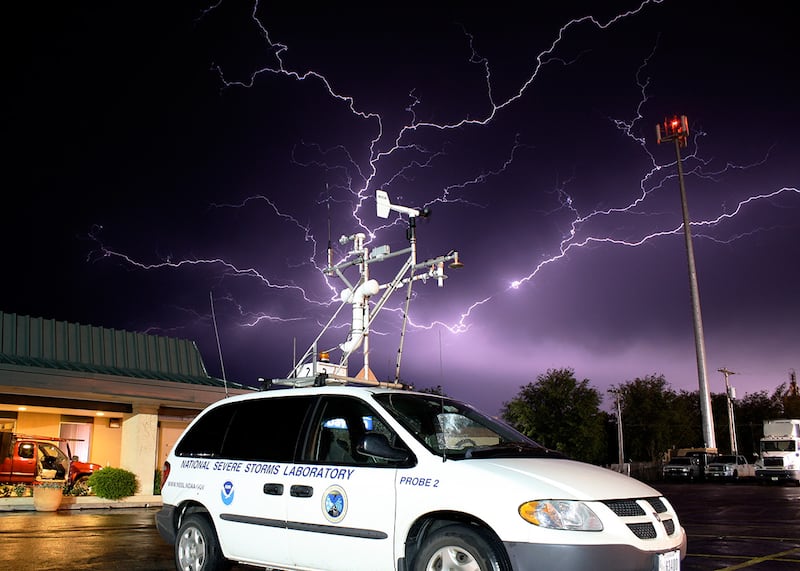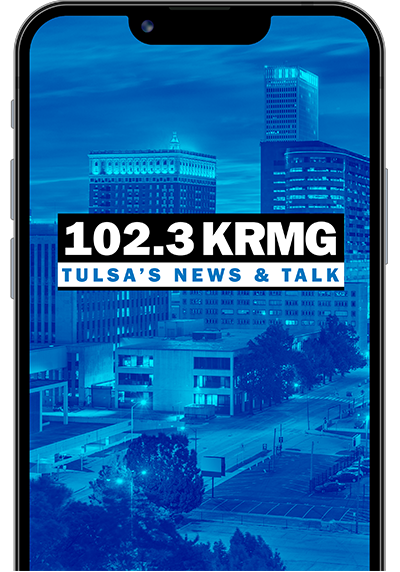
102.3 KRMG is Tulsa’s severe weather station and we know that any time of the year weather can be dangerous. That’s why we’ve compiled this list of what we think are some great tips on how to keep you and your family safe when the skies turn gray.
In Oklahoma, it's not a matter of if we will have severe weather; it's a matter of when.
We can't escape the weather, but we can prepare for it if we know what is coming.
Each day in the United States over 210 million weather observations are processed and used to create weather forecasts.
Meteorologists in the 126 National Weather Service local offices combine these large scale forecasts with local observations and their knowledge of local weather patterns to make a forecast for their specific region.
Always keep a battery powered radio in your emergency kit so you can stay up to date with the latest hazard, watches and warnings by tuning in to 102.3 KRMG.
Know the terms:
Severe Thunderstorm Watch - Severe thunderstorms are possible in and near the watch area. Stay informed and be ready to act if a severe thunderstorm warning is issued.
Severe Thunderstorm Warning - Severe weather has been reported by spotters or indicated by radar. Warnings indicate imminent danger to life and property.
- The typical thunderstorm is 15 miles in diameter and lasts an average of 30 minutes. Despite their small size, ALL thunderstorms are dangerous! Of the estimated 100,000 thunderstorms that occur each year in the United States, about 10 percent are classified as severe.
Tornado Watch - Tornadoes are possible in and near the watch area. Review and discuss your emergency plans, and check supplies and your safe room. Be ready to act quickly if a warning is issued or you suspect a tornado is approaching. Acting early helps to save lives! Visit this page for answers to frequently asked questions about tornadoes.
Tornado Warning - A tornado has been sighted or indicated by weather radar. Tornado warnings indicate imminent danger to life and property. Go immediately under ground to a basement, storm cellar or an interior room (closet, hallway or bathroom).
- A tornado is a violently rotating column of air extending from a thunderstorm to the ground.
- Tornadoes cause an average of 70 fatalities and 1,500 injuries in the U.S. each year..
- The strongest tornadoes have rotating winds of more than 250 mph.
- Tornadoes can be one mile wide and stay on the ground over 50 miles.
- Tornadoes may appear nearly transparent until dust and debris are picked up or a cloud forms within the funnel. The average tornado moves from southwest to northeast, but tornadoes have been known to move in any direction.
- Many people mistakenly think that a highway overpass provides safety from a tornado. In reality, an overpass may be one of the worst places to seek shelter from a tornado. Seeking shelter under an overpass puts you at greater risk of being killed or seriously injured by flying debris from the powerful tornadic winds. Visit this page for more information.
Flash Flood Watch - A Flash Flood Watch means that flash flooding is possible in or near the watch area.
Flash Flood Warning - Flooding is occurring in the area or will be very soon.
- Flash Flooding is the #1 cause of deaths associated with thunderstorms...more than 140 fatalities each year
- Most flash flood fatalities occur at night and most victims are people who become trapped in automobiles.
- Six inches of fast-moving water can knock you off your feet; a depth of two feet will cause most vehicles to float.
Find more information about the types of severe weather - including the dangers of straight line winds and hail - here
Lightning Safety Rules:
In the United States, lightning kills 300 people and injures 80 on average, each year. All thunderstorms produce lightning and all have the potential for danger. Those dangers can include tornadoes, strong winds, hail, wildfires and flash flooding, which are responsible for more fatalities than any other thunderstorm-related hazard. Many of these tragedies can be avoided. All thunderstorms produce lightning and are dangerous. Lightning kills more people each year than tornadoes and hurricanes combined.
- Lightning can strike more than 10 miles away from any rainfall. Many deaths from lightning occur ahead of the storm because people wait until the last minute before seeking shelter.
- Lightning can strike well beyond the audible range of thunder. If you hear thunder, the thunderstorm is close enough that lightning could strike your location at any moment.
- Lightning injuries can lead to permanent disabilities or death. On average, 20% of strike victims die; 70% of survivors suffer serious long term effects.
- Look for dark cloud bases and increasing wind. Every flash of lightning is dangerous, even the first. Head to safety before that first flash. If you hear thunder, head to safety!
- NO PLACE outdoors is safe during a lightning storm. If lightning is seen or thunder is heard, or if dark clouds are gathering overhead, quickly move indoors or into a hard-topped vehicle and remain there until 30 minutes after the final clap of thunder
Info compiled from cdc.gov, noaa.gov, redcross.org, reddirtready.com






